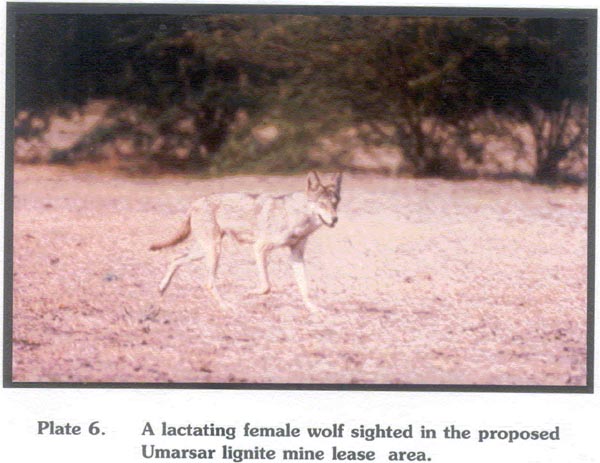Habitat Description
|
The general vegetation of the area was of the semi-arid scrub type (Champion and Seth, 1968), a climax for the region given the edaphic and rainfall characteristics of the region. The dominant vegetation comprises of several species of Acacia, Prosopis, Salvadora, Zizyphus, Capparus and Euphorbia (Table 2). Despite a heavy seasonal grazing pressure from large livestock and continuous grazing and browsing pressure from small live stock, and fuel wood collection, the native vegetation has not been severely degraded. Degraded areas were prominent in and around the industrial development and settlement areas of Panandhro. The dominant vegetation in such areas was of the exotic Prosopis juliflora. Table 2 lists the woody vegetation in order of dominance of species, their densities and standard errors within the 3 study areas. The density of P. juliflora, if considered an index of disturbance, suggests that Mata-no-Madh area is least disturbed, followed by Akrimota and lastly by Umarsar.
A similar order listing is obvious when animal signs and sightings are considered (Table 3). Table 2. Woody vegetation along 1,000 x 10m belt transects at the 3 proposed lignite mining areas in Lakhpat taluka & Kutch.
(The numbers are mean individuals per ha along with their standard errors). Table 3. Animal signs and sightings along 1km length transects at the 3 proposed lignite mining sites.
|
|||||||||||||||||||||||||||||||||||||||||||||||||||||||||||||||||||||||||||||||||||||||||||||||||||||||||||||||||||||||||||||||||||||||||||||||||||||||||||||
Last Updated: October 1, 2015










